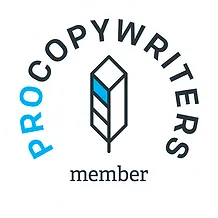Copywriting is about getting people to do things.
You might want someone to buy. Or think about a specific idea. Or hire you as a freelance copywriter (hello).
But there’s a problem – people don’t want to do what you say.
In this Swiped post, we’ll look at an example of overcoming that natural resistance to persuasion – by putting the initial decision firmly in the past.
Winning sales makes people wince
If people didn’t resist being sold on something, I’d be out of a job.
Luckily, there are tonnes of studies that show us how people object to the idea of being persuaded to part with their money. Dan Ariely, a Professor of Psychology and Behavioural Economics, has this idea of the “pain of paying” – the tangible discomfort that we encounter every time we pay.
He explains it better than I do in this long but interesting video:
In short, we don’t like spending money. And we’re going to resist anyone who tries to make us do that.
It’s why buying things is made so effortless. It’s why all those ecommerce websites remember your details so you can buy with one click. It’s why you receive those iTunes invoices in one big email, not individually – so you get a short hit of pain, rather than lots of doses along the way.
Buying things causes moral pain. So we try to avoid it.
The pain of making a decision
Of course, any freelance copywriter knows there are loads of times when you don’t want the money (at least not right away). You’re just asking people to make a decision, like sign up to your blog, or put their name on a petition.
But that pain is still there.
In part, it’s because we’re giving away a currency of the modern age – our contact information. In some ways that’s a financial transaction, because we know our details have monetary value.
Equally, there’s decision anxiety. That’s the feeling of uncertainty that comes from any decision, no matter how minor it may seem.
Now I’m not saying your signup button turns people into shivering wrecks. Nobody will need to drop into Accident and Emergency after they click your links.
But these things aren’t always instinctive, or natural. People don’t hop into sales funnels on a whim.
So if that’s what you want them to do, you need to find a way to get past that resistance.
How Econsultancy starts the sales process

Econsultancy is a pretty great thing.
It brings together blog posts, articles, reports, studies, and training from around the world of digital marketing. And if you’re reading this and not reading that, you’re missing a trick.
From what I can tell, much of the revenue in Econsultancy comes through subscriptions. And I think the way they overcome your resistance to starting the sales process is fantastic.
On the homepage, a bold, striking banner promises “You’re about to discover why some marketers have an unfair advantage…”
Now, the most obvious thing there is prodding a pain point. That’s a classic way to get past the pain of paying – by invoking feelings that are even more painful.
You might have to part with some money to subscribe. That’ll hurt.
But if you’re in marketing, and all your competitors have an unfair advantage, you’re losing out. You’re making less money than them. You’re making less money than you should.
That hurts considerably more. Now pick which pain you can put up with.
The start is the hardest part
But although prodding a pain point is effective, it’s not the most interesting thing about this little bit of copywriting.
What I like most is that Econsultancy assumes they’ve made the sale. They’re not asking me to hit the button and find out more. They’re not making an offer that I can take them up on, or reject.
Their copy tells me I’m about to make the discovery. Like the decision has already been made. Like I’m going to click their button, any minute now.
It’s a very delicate balance. Done badly, that presumptive quality could come across arrogant, and put people off.
But here, accompanied by the lead benefit of “becoming a better marketer”, it doesn’t. Crucially, it doesn’t say: “you’re about to spend your money.”
That would be too far, right?
Instead, it tells me what’s going to happen next, making it sound inevitable. Taking the pain of the decision away.
And that makes it much more likely to happen.
Putting the beginning behind you
If people resist entering your sales funnel and following the pipeline to handing over their money, there are lots of things you can do.
But why bother? Make them feel like they’ve already entered it, and avoid that resistance altogether.
What I’ll take from that little, seemingly innocuous piece of Econsultancy copywriting, is that you don’t always need to start at the beginning. As with fiction, you come in late. You make people feel like they’re already hurtling forwards.
Because with a sense of momentum, a perpetual motion, and less uncertainty around decisions, more people will click on to the next phase.
Closer to the sale all the time.
